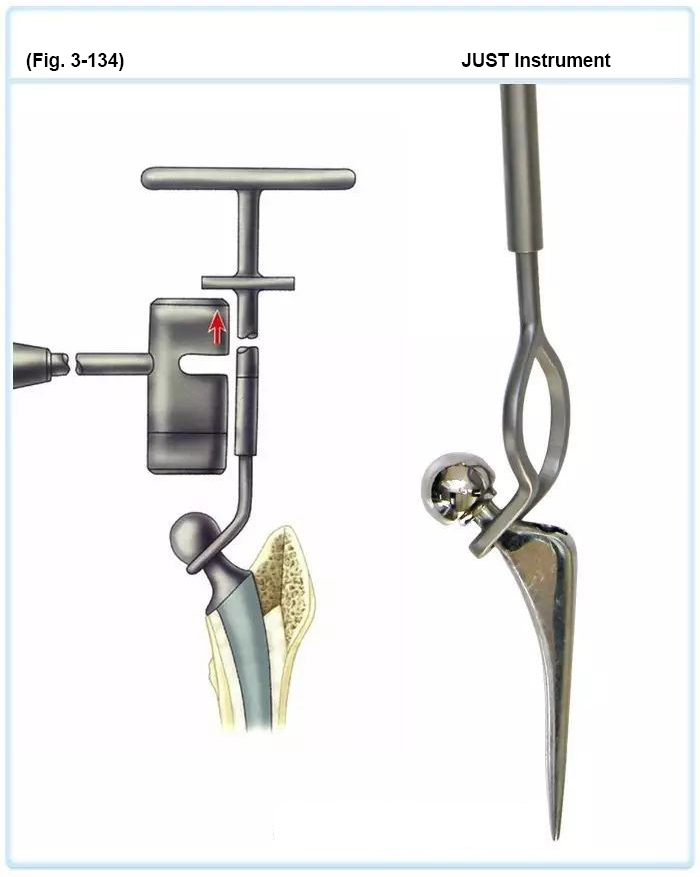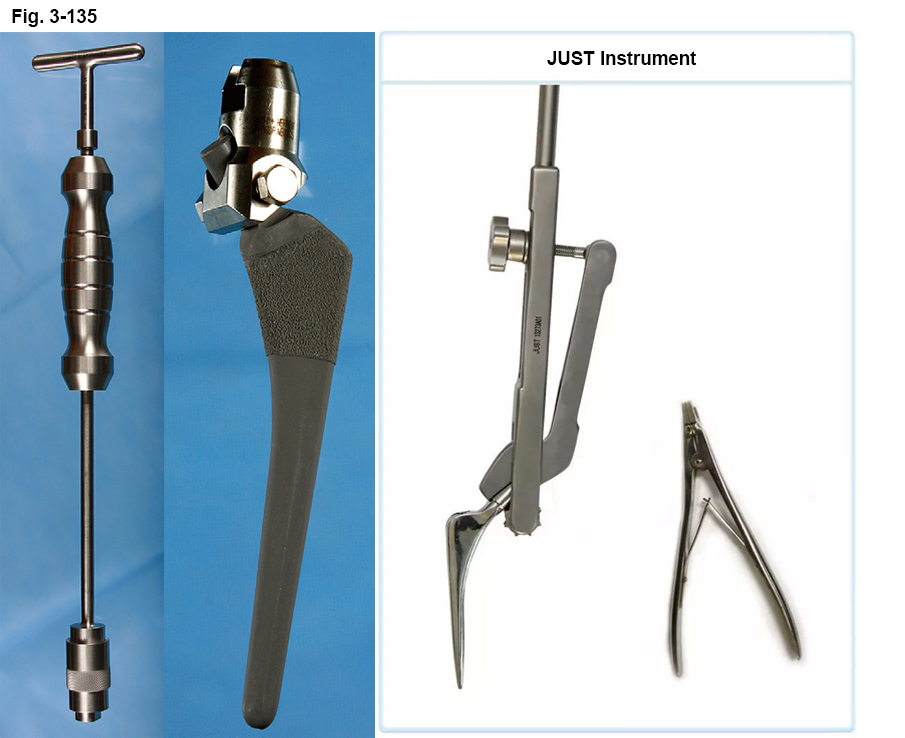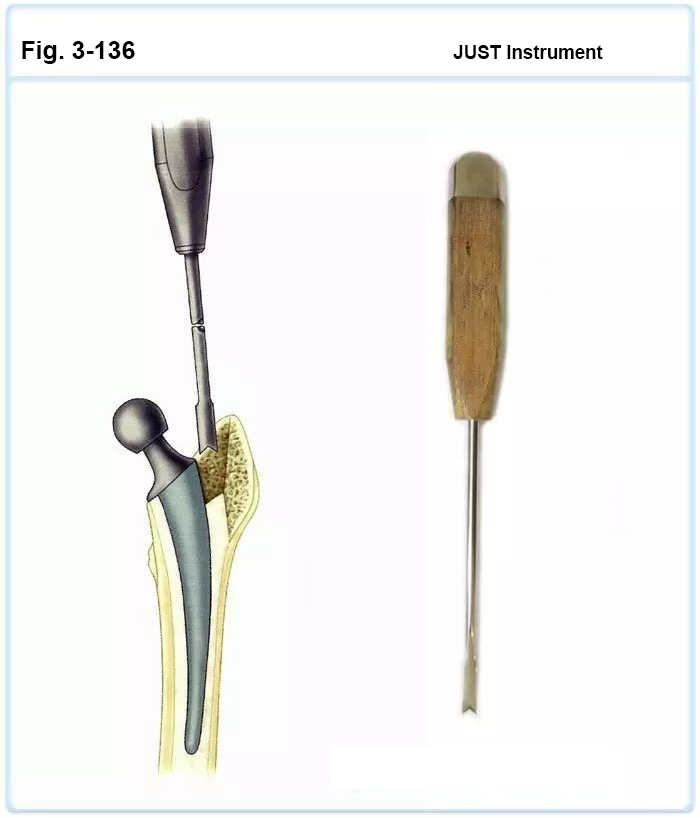Removal of cemented femoral component
 May. 25, 2020
May. 25, 2020
REMOVAL OF CEMENTED FEMORAL COMPONENT
■ Occasionally, the femoral component is so grossly loose that it can be removed simply by hand. “Loose” does not always equate with “easily removed,” however. In mostcases, the stem must be forcibly disimpacted from the femur by some means.
■ If the stem has a fixed head, use a commercially available extraction device with an attached slap hammer or driving platform. Several devices are available that pass over the head and hook around the neck of the implant(Fig. 3-134).

■ If the stem is a contemporary design with a modular head, standard extraction devices simply pull the head off and cannot be used. Most systems with modular heads have a specific stem extraction device that is part of the system instrumentation. Typical designs have a hook thatis inserted through a hole in the stem, a threaded device that screws into the stem, or a clamplike device that is secured to some irregularity on the neck. Identify the stem design, and contact the manufacturer’s representative to have the extraction device available in the operating room. An extraction device is available that bolts onto the modular neck and may be useful if an implant-specific extractor is not available (Fig. 3-135).

■ If no extraction device is available, use the collar as a driving platform. Tap the stem out from below with a mallet and punch. If the collar does not protrude beyond the medial cortex of the neck, remove a small amount of bone from the neck to expose a portion of the collar.
■ Extraction of early design cemented stems usually presents no major problems. Most of these designs are smooth and tapered with few surface irregularities. Before attempting to extract the stem, remove overhanging bone from the greater trochanter that may impede stem removal. If the stem has a proximal curvature, remove the lateral cement that lies over the shoulder of the implant (Fig. 3-136); otherwise, the stem cannot move proximally without fracturing the femoralmetaphysis.

■ Removal of cemented stems that have been precoated with PMMA or have a porous coating can be difficult. If the stem is being removed because of infection or malposition and is not loose, it is unlikely that it can be extracted without first removing some of the cement orporous coating.
■ Use a motorized instrument with a long, thin burr to separate the proximal cement or porous surface from the stem.
■ Do not use osteotomes for cement removal at this point because they may create a wedge effect that would split the femur. Use osteotomes only after the stem has been safely extracted and a central space has been opened into which the fragmented cement can displace.
■ Pass the cutting burr circumferentially around the stem until the precoated or porous surface has been completely exposed.
■ Insert the burr at an angle from anterior to posterior to remove the medial cement from beneath the collar.
■ Remove the collar from the stem with a metal-cutting, carbide-tipped burr if necessary to gain access to the medial surface of the implant. If the stem is composed of a modern high-strength alloy, this may take an excessive amount of time.
■ After removal of the proximal cement, attempt to extract the stem.
■ If it cannot be removed with forceful blows on the extractor, and the proximal cement has been removed as completely as possible, do an extended trochanteric osteotomy(see Fig. 3-140 and Technique 3-11) to gain access to a larger portion of the cement-prosthesis interface or make a small window in the anterolateral femoral cortex. Place the window just distal to the level exposed by proximal cement removal and not at the tip of the stem. Removeadditional cement through the window until the stem can be extracted.

Note: this article comes from CAMPBELL’S OPERATIVE ORTHOPAEDICS by S. Terry Canale James H. Beaty.













